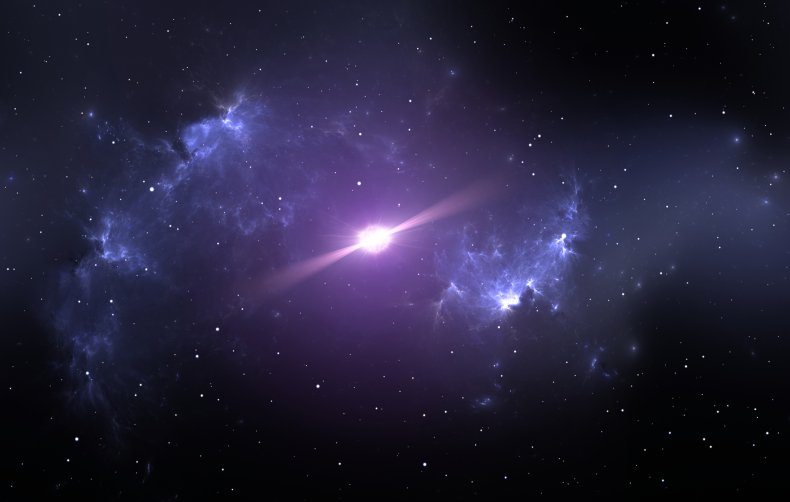Scientists have discovered a new type of star that they hope will help us understand the origin of the most magnetic objects in the universe: magnetars.
Star HD 45166 sits 3,000 light-years away in the constellation of Monoceros. It is one of a pair of stars and is rich in helium, but its peculiar radiation patterns could not be explained with conventional models.
“I remember having a Eureka moment while reading the literature: ‘What if the star is magnetic?'” Tomer Shenar, the lead author of a recent study on this object published in the journal Science, said in a statement.
Using observations from the Canada-France-Hawaii Telescope—which can detect and measure magnetic fields—and spectral data from the European Southern Observatory facility in Chile, it became clear that HD 45166 did indeed have a strong magnetic field.
ESO/L. CALÇADA
“This is the strongest field ever observed in a massive star, and therefore provides an unparalleled laboratory to study magnetic fields and their interaction with stellar material in extreme conditions,” Shenar, who is an astronomer at the University of Amsterdam in the Netherlands, told Newsweek. “This is, quite literally, a new type of astronomical object we were not familiar with so far.”
What is still unclear is how and why these magnetic fields form.
“We speculate that it involved the merging of two stars in the past,” Shenar said. “Such a process can produce strong magnetic fields in stars.”
This intense magnetic field is 100,000 times stronger than the Earth’s and traps the material around the star in streams along the magnetic field arcs that are radiant from its poles.
“If you were to stand next to the star, you would in fact mostly see this material streaming erratically around the star—the stellar surface itself is largely hidden by this material,” Shenar said.
The discovery of this object is exciting in itself, but it may also help us learn more about another mysterious astronomical phenomenon: that of the magnetar. These are super-dense dead stars with ultra-strong magnetic fields that can be found throughout our galaxy. But scientists still don’t know how they form or where they come from.
“[HD 45166] is likely to become a magnetar, the most magnetic object in the Universe,” Shenar said. “We don’t really know how these objects form, so finding a potential formation route for these objects is exciting.”

Pitris/Getty
When stars run out of fuel, they die. But how they die will depend on their size. For a star like our own Sun, they begin to swell into red giants and eventually eject material into a planetary nebula, leaving a planet-sized white dwarf at its core.
However, larger stars, like HD 45166, have a much more dramatic ending. When these run out of fuel, they collapse under their gravity and their outer layers explode into what’s known as a supernova. The remaining core becomes what is known as a neutron star (or, if the star is particularly massive, a black hole).
Magnetars are a special class of neutron stars with an exceptionally strong magnetic field. What causes this magnetism is still a mystery. Shenar said that there are two main theories: either the field could arise during the collapse of the dying star, or the magnetic field is there all along and simply intensifies as the star collapses. “[This would be] much like how a skater rotates faster when they pull their hands in and shrink,” he said.
The existence of HD 45166 supports this second theory.
“The magnetic star in HD 45166 appears to be massive enough to collapse under its own gravity in the future and become a neutron star,” Shenar said. “When it does, it will shrink from its current size—about one solar radius, or 700,000 kilometers—to the size of a neutron star—about 12 kilometers! This shrinkage will boost its magnetic field by a factor of…a few billion!”
While HD 45166 will probably survive for at least a million years, this is relatively short in astronomical terms. “Dinosaurs roamed the Earth 60 million years ago and the Earth is 4.5 billion years old, to put things in perspective,” Shenar said.
Given the size of the universe, HD 45166 is unlikely to be alone in its magnetic properties and other similar stars may provide more insights into the mysterious origin of magnetars.
“Statistically speaking, there should be thousands more such objects lurking in our Galaxy, so I hope we’ll find more,” Shenar said.


